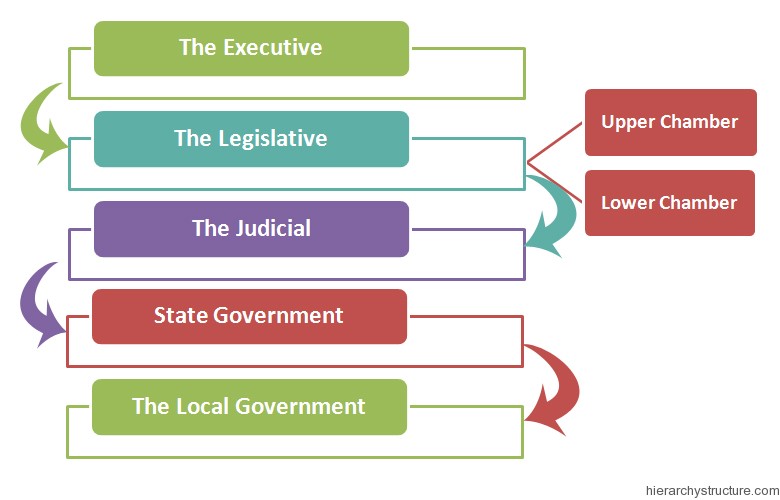The Mexican political hierarchy works in an immense framework of a federal democratic republic headed by the president. The congressional system is the basis of the government. This hierarchy is broadly divided into five categories aka the Executive, the Legislative, the Judicial, the State government and the Local government. The Mexican Political hierarchy is described below in a descending order pattern means starting with the utmost authority holder political body and proceeding further describing all the political bodies in brief.

- The Executive
- The Legislative
- The Judicial
- State Government
- The Local Government
The Executive – The presidency is the most vital, actually paramount body in the entire Mexican political system. The president is also labeled as the “Six year monarchy” by the people of Mexico. President is elected directly by a simple majority of the registered voters in the Federal District and the 31 states of Mexico. Formally the president holds the title of Head of government, the commander in chief or the chief of the state. Minimum age set for a person to appear in the elections for the title of president is thirty five years along with Mexican born citizenship.
The Legislative – The Legislative branch of the Mexico political hierarchy incorporates two chambers aka the Senate (an upper chamber) and Chamber of the Deputies (the lower chamber). The Senate consists of approximately one hundred and twenty eight members while the Chamber of the Deputies incorporates 500 members who serve for a time period of three years according to the constitution terms and guidelines.
The Judicial – The Judicial branch of the Mexico political hierarchy is divided explicitly in two groups as the Federal system and the State system. The highest power and authority holder court of the Mexico is the Supreme Court of Justice and is located in the Mexico City and incorporating 21 magistrates along with 5 auxiliary judges. These all are appointed by the President and then confirmed by the Senate. For a person to be a Mexican Supreme Court justice, one must be a Mexican citizen by birth, age bar between 35 to 65 years along with a law degree.
State Government – Mexico consists of 31 states and a Federal district encompassing Mexican City. Each state has its own constitution with the right to legislate and levy taxes and modeled on the national charter. State government like federal government also incorporates the Executive, the Legislative and the Judicial branches with same functions of these three but at the state level. Mexico’s political system is highly centralized. State governments highly depend on the Mexico City for the state revenues.
The Local Government – The basic and lowest level of the Mexico political hierarchy is the local government of Mexico. This is referred as the Municipality. Municipal governments are responsible for a variety of public services including water and sewerage; cleaning and maintenance; street lighting; supervision of slaughterhouses; public safety and traffic; and the maintenance of parks, gardens, and cemeteries.
Know more Mexico social hierarchy
